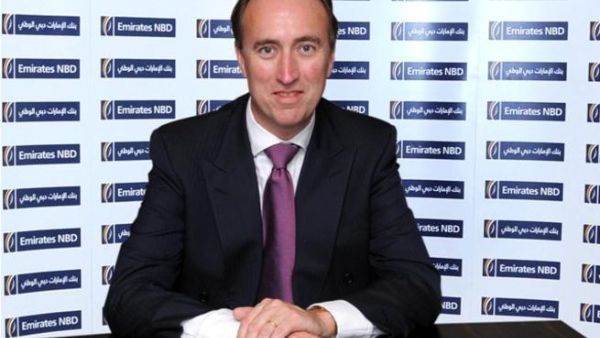Downgrade to US credit adds to the fear in the markets

The world continues on a path of changing global leadership. The West is in decline and the East is on the rise. Events of the past few weeks are a reflection of ongoing change. As we had thought would happen, S&P cut the sovereign credit rating of the United States to AA+ from AAA. Such a move was inevitable after all of the political prevarication of recent weeks in dealing with the debt crisis. This was the first time the US has suffered a downgrade since it was given an AAA rating in 1917. Meanwhile the financial markets continue to pressure the Euro zone to find further solutions to their debt problems. Italian and Spanish bond markets felt the full force of selling pressure last week as their bond yields moved out to extreme spreads over German bunds.
The problem at present is that the political and economic leadership of the West is still coming to grips with fundamental issues. Central bankers in Europe fight amongst themselves about what is needed and political infighting has brought the credit downgrade to the United States. The issue for the leadership of the West is that the situation cries out for more radical thinking in how to deal with the issues. Much of the West is built on capitalism and social democracy; however social democracy has become too expensive to deliver as health care and central government spending have far outstripped economic growth. Policy makers need to overhaul the social benefits whilst freeing up private sector industry to generate greater profits and ultimately employment growth. Unfortunately for the moment the policy makers of the day have still to offer the radical reform required.
It is tempting to buy equities after what was a near 10% fall last week. However to be truly certain of whether it is right to buy you have to be sure that the recent fall out in financial markets is not going to have a meaningful negative impact on global growth. Equity valuations are low (Euro area equity markets trade on a P/E multiple of 9.7 and a dividend yield of 5%), and interest rates look set to remain very low for some considerable time to come. Companies around the world are generally flush with cash and have the capacity to increase dividends and/or potentially commit to cash to the markets through mergers and acquisitions. The fall in equities has left the dividend yield on many markets are at or above the level of government bond yields. The aggregate global equity market is on a forecast dividend yield of 2.8% compared to dollar US 10 year bond yield of 2.5%. In Europe ex UK dividend yield of 5.0% is comfortably above the bond yield of most European countries. Buying high dividend paying companies is a strategy we believe will continue to give investors a rewarding return over the medium term.
In the current climate of fear, markets are likely to trade on technicals meaning that investors will look for key chart supports. For the US equity market the S&P500 index support is around 1178 and if that breaks the index could fall as low as 1050 representing a further 13% further downside risk. On the Dubai stock market the DFM has a low of 1352 in March of this year representing a further 9% downside risk. However at such levels we would be buyers irrespective of some of the risks to near term economic growth.
The big problem for investors at the moment is the lack of growth in the United States and Europe. Economic data has continued to disappoint, and the fear will be that the latest volatility in the markets will only add to the concerns. In the United States, manufacturing sector confidence has fallen back far more than had been expected. The latest Institute of Sales management (ISM) survey of manufacturing confidence fell back to 50.9 well below expectations. This is a particularly important indicator as it is typically well correlated with the direction of the equity market. When the ISM survey falls the equity market tends to follow- that happened with a vengeance last week. The 'good' news for the week was that the US employment data was broadly in line with expectations however the 117,000 of new jobs created in June is still pretty anemic for an economy the size of the United States.
We doubt that the US credit rating downgrade will have a substantial impact on US debt market at this stage. Indeed as investors were being hit by the selling pressure in risk markets such as equities, US Treasuries were performing relatively well. The US 10 year bond yield bottomed at around 2.40%, whereas yields started the week around 2.75% implying good capital gains for holders of US debt. So whilst holders of US debt such as the Chinese monetary authorities may raise their concerns about the state of US finances the impact so far there has been an increase in the value of their investments in US bonds.
To be fair to Europe they have done more than the United States to address their debt problems. However the concern of investors is that the funds set aside to support the financial system are not large enough to cope with the potential demands. As we stated last week, the European financial stability fund (EFSF) is insufficient to cover a potential problems in Spain and Italy. European leaders will meet again this week to potentially add further funds to the EFSF. Spain and Italy may do more to convince the markets that they are truly on top of their debt problems however bear in mind that Spain has already committed to cutting their budget deficit from 9.6% to 6.0% in the current year. The European Central Bank is also likely to act to bring stability to the markets by potentially buying Spanish and Italian debt in order to bring bond yields down.
Both the Swiss and Japanese authorities took action to try to arrest the strength in their respective currencies. In Switzerland the authorities took interest rates down to virtually zero and increased the monetary base of the economy by CHF 30 billion to CHF 80 billion. The bank of Japan intervened to weaken the Yen. Initially the Yen fell 4% versus the dollar. We suspect the Japanese authorities will continue to intervene and that any further appreciation of the Yen to the 75-76 versus the dollar will be met with further selling by the Bank of Japan.
Background Information
Emirates NBD
Emirates NBD, the leading banking group in the region, was formed on 19 June 1963, when H.H. Late Sheikh Rashid bin Saeed Al Maktoum signed the Charter of Incorporation of the National Bank of Dubai (NBD) which became the first National Bank established in Dubai and the United Arab Emirates (UAE). With the blessings of H.H. Sheikh Mohammed bin Rashid Al Maktoum, Vice President and Prime Minister of the UAE and Ruler of Dubai, NBD merged with Emirates Bank International (EBI) on 06 March 2007, to form Emirates NBD, the largest banking group in the region by assets. On 16 October 2007, the shares of Emirates NBD were officially listed on the Dubai Financial Market (DFM). The merger between EBI and NBD to create Emirates NBD, became a regional consolidation blueprint for the banking and finance sector as it combined the second and fourth largest banks in the UAE to form a banking champion capable of delivering enhanced value across corporate, retail, private, Islamic and investment banking throughout the region.






